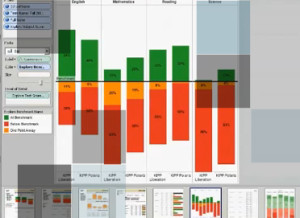Energy Software and Optimizing Production
Amidst reports that Texas production has grown to account for 34.5% of total US figures, energy software is becoming more important for drilling optimization than ever.
Even as we discover new plays every day, there are old ones that simply don’t reach their potential because we lack the right tools. As Forbes highlighted in ‘The Texas Shale Oil & Gas Revolution,’ earlier this year:
“Consider this: the common belief that an operator is able to recover 10-15% of the available resource with the initial completion of an Eagle Ford Shale well. As technology improves, it is likely that companies will be able to go back into many of these wells, re-stimulate them, and recover much more of that resource decades from now.”
New Investments
A report released in March by IDC Energy Insights, ‘Business Strategy: Production Optimization – Focus on Operations,’ stresses this point:
“Access to more information from multiple sources and disciplines and more sophisticated analytics will improve the oil and gas industry’s ability to optimize production.”
The IDC report also highlights that as a result of these pressures, “Forty-eight percent of upstream companies will be investing in smart well production in the next one or two years.”
Three Reasons to Improve Energy data
The report goes on to say that optimization will not rely on tools on the ground in the field. Instead, E&P companies will spin a richer set of data across multiple departments to find opportunities for improvement.
As more energy companies take up “Big Data and analytics to support production optimization in the next five years,” they will reap multiple benefits including:
- reduced time to run the numbers
- better visualization
- faster time to a final decision
 Three Steps to Visibility
Three Steps to Visibility
While every oil and gas company is different, most would benefit from implementing three energy software strategies right now.
1. Master Data Management
Most upstream companies find that their data is siloed amongst departments. Why is this? Systems are not connected, and as a result, vital data never gets updated.
Different naming conventions arise for the same terms (like a well API or a lease). Watch this video on master data management to find out what it is, and what it would take to implement within your company.
2. Key performance Indicators
There are two kinds of indicators for business health. Leading indicators give you advance notice that something is going wrong. Lagging indicators only show up after it’s too late to make a change.
Find out how to position your organization’s data so that you can see the leading indicators that enable the possibility of change. Read this post on key performance indicators, then download a helpful worksheet.
3. Iterate, iterate, iterate
Once your data is clean and you have the ability to troublshoot, the last step is iteration! The idea of lean concepts has never been relevant to the Shale industry than it is now.
Develop a feedback loop for applying learnings from each well you drill. Over time, this will represent huge gains for your company in terms of production optimization.
For more, check out our president’s post on applying lean concepts within your organization.
Energy Software Delivers
The IDC wrapped up their report with these words, “Visualization combined with analytics will provide a way to bring optimization from statisticians to the business.”
Participating in your company’s data and becoming a good consumer of this data are the keys to production optimization.

